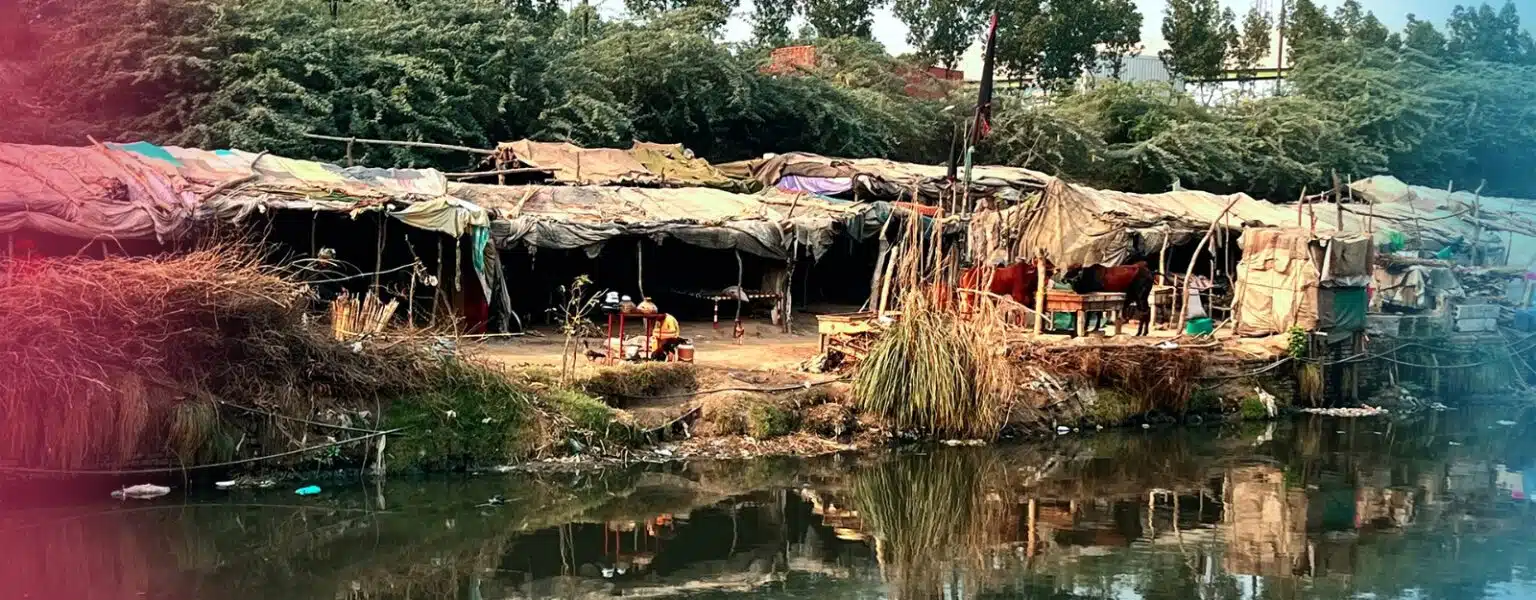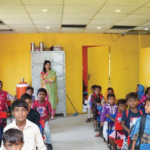
The world is witnessing a rapid surge in population, and urbanization remains an inevitable trend. The migration of people from rural to urban areas causes the growth of cities and a significant increase in demand for residential space, among other things. The quest for better living conditions often leads to the creation of slums and overcrowded living conditions. The United Nations defines slums as areas that lack basic infrastructure like access to clean water, sanitation, and reliable shelter (UN-Habitat, 2003). In most cases, slums are characterized by extreme poverty, informal housing, insufficient water, and sanitation facilities that jeopardize the health and safety of the inhabitants. According to the UN, approximately one billion people currently live in slums worldwide, with the predictions are that this number is going to be doubled by 2030. This trend indicates that slums are a social and economic concern worldwide that requires thoughtful and collaborative efforts to improve the well-being of slum dwellers. Therefore, this essay discusses the structural framework that cities need to improve to accommodate people living in slums.
Provision of Decent Housing:
The first and foremost structural framework that cities need to improve is the provision of decent housing that is affordable and accessible to slum dwellers. The slums typically emerge as a result of inadequate and lack of affordable housing in the urban areas, and the increasing population rate further compounds the issue. The provision of affordable housing will facilitate the resettlement of the slum dwellers in better living conditions. According to the International Labour Organization (ILO), the provision of decent housing should be accessible and encompass characteristics, such as affordability, access to basic utilities, security of tenure, robust building and maintenance standards, and appropriate transport services (ILO, 2015). Therefore, to accommodate the people living in slums, cities must invest in affordable and decent housing programs, establish favourable policies that promote affordable housing, develop land-use plans for all residential areas, and invest in basic infrastructure like water, sanitation facilities, and transportation. These measures will improve the well-being of those living in slums and create suitable living conditions that foster personal and economic development.
Water Supply and Sanitation:
Water supply and sanitation are some of the most critical infrastructure that requires improvement in cities so that slum dwellers can access potable water and hygienic sanitation facilities. According to Water and Sanitation Program (WSP), approximately 1.8 billion people in the world use water that is contaminated with faecal matter, leading to the spread of water-borne diseases, including cholera, typhoid, and hepatitis (WSP, 2014). The same WSP report further indicates that over 2.5 billion people worldwide lack access to appropriate sanitation facilities (WSP, 2014). It is estimated that 2 billion people worldwide depend on latrines or other forms of basic sanitation facilities that do not provide adequate hygiene and privacy requirements (UN-Habitat, 2003). The inadequate supply and access to clean water and sanitation facilities are, therefore, conditions that cannot be ignored yet they pose a significant threat to the health and well-being of individuals living in slums. Therefore, cities must improve the water supply and sanitation facilities to accommodate the current and future population. In addition to ensuring the availability of potable water and hygienic sanitation facilities, cities must ensure that these services are accessible and affordable for all, including slum dwellers.
Building Regulations and Safety Standards:
Building regulations and safety standards are critical elements of a city structural framework that is necessary to accommodate people living in slums. Most slum housing structures are informal and built without adherence to building and safety standards. The lack of building regulations means that slum dwellers live in substandard housing conditions that are prone to disasters such as fires or building collapses. Inadequate buildings in slums are often constructed so densely and on unstable ground, making them vulnerable to natural disasters such as floods, landslides, and earthquakes (UN-Habitat, 2003). Therefore, to accommodate slum dwellers, cities must improve their building and safety regulations, ensuring that those living in slums have access to affordable yet safe housing that meets construction and safety standards. In addition, cities must be vigilant to inspect informal housing structures regularly to ensure they comply with safety standards.
Transportation and Connectivity:
Transportation and connectivity are critical aspects of a city’s structural framework necessary to accommodate people living in slums. Good transportation enables slum dwellers to access employment, educational centres, and other critical services they need for their day-to-day living. Poor infrastructure hinders residents’ chances of finding work or even travelling to meet their basic needs. Social poverty ca be reduced with the proper accessibility and affordibilty of the public transport. Therefore, cities must provide affordable and accessible public transportation services, improve existing road networks, and invest in other forms of transportation such as bike paths, to make dependable connectivity to work available to slum dwellers. This move will avail essential transportation and prevent the creation of new slums as residents move to new areas with better transport networks.
Conclusion
In conclusion, accommodating people living in slums requires the improvement of a city’s structural framework. Decent housing that is affordable and accessible, access to potable water and hygienic sanitation facilities, building standards and safety regulations, and transportation and connectivity are some of the primary factors that cities need to consider while creating a conducive environment for slum dwellers. By improving these aspects of city life, slum inhabitants will have better living conditions, which will spur personal and economic development. The United Nations has recognized the importance of providing slum dwellers with better living conditions and has identified sustainable cities and communities as one of the Sustainable Development Goals (SDGs). Cities need to ensure that the current and future generation have access to adequate, affordable, and environmentally sustainable housing, while addressing the continued slum buildup. The collaboration between stakeholders in the public and private sectors, civil society, and communities is essential to ensuring sustainable urbanization and building sustainable, vibrant, and inclusive cities that can provide opportunities for all.







No comment yet, add your voice below!